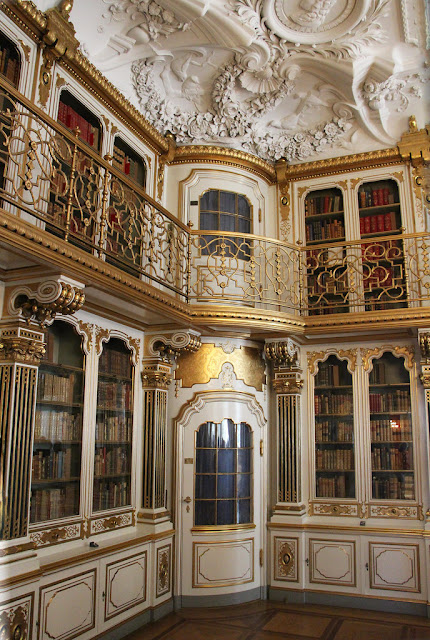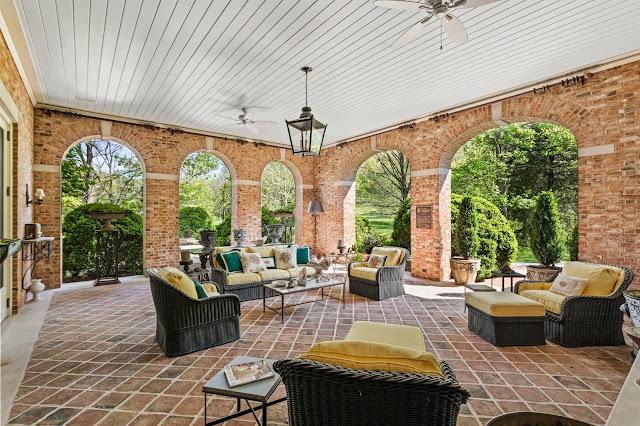Monday, January 30, 2023
Friday, January 27, 2023
Wednesday, January 25, 2023
The Legendary Met Opera
The Metropolitan Opera (commonly known as the Met) is an American opera company based in New York City, currently resident at the Metropolitan Opera House at Lincoln Center, situated on the Upper West Side of Manhattan. The company is operated by the non-profit Metropolitan Opera Association, with Peter Gelb as general manager. As of 2018, the company's current music director is Yannick Nézet-Séguin.
The Met was founded in 1883 as an alternative to the previously established Academy of Music opera house and debuted the same year in a new building on 39th and Broadway (now known as the "Old Met"). It moved to the new Lincoln Center location in 1966.
.jpg) |
| Nino Machaidze - Marie La Fille du Régiment (The Daughter of the Regiment) Metropolitan Opera House, December 24, 2011; Production and costumesː Laurent Pelly, |
The Metropolitan Opera is the largest classical music organization in North America. Until 2019, it presented about 27 different operas each year from late September through May. The operas are presented in a rotating repertory schedule, with up to seven performances of four different works staged each week. Performances are given in the evening Monday through Saturday with a matinée on Saturday. Several operas are presented in new productions each season. Sometimes these are borrowed from or shared with other opera companies. The rest of the year's operas are given in revivals of productions from previous seasons. The 2015–16 season comprised 227 performances of 25 operas.
.jpg) |
| 1912 Metropolitan Opera premiere of Boris Gudonov with Anna Case, Maria Duchêne, Adamo Didur as Boris Godunov, and Leonora Sparkes. Bain News Service, |
The operas in the Met's repertoire consist of a wide range of works, from 18th-century Baroque and 19th-century Bel canto to the Minimalism of the late 20th and 21st century.[3] These operas are presented in staged productions that range in style from those with elaborate traditional decors to others that feature modern conceptual designs.
The Met's performing company consists of a large symphony orchestra, a chorus, children's choir, and many supporting and leading solo singers. The company also employs numerous free-lance dancers, actors, musicians and other performers throughout the season. The Met's roster of singers includes both international and American artists, some of whose careers have been developed through the Met's young artists programs. While many singers appear periodically as guests with the company, others maintain a close long-standing association with the Met, appearing many times each season until they retire.
Monday, January 23, 2023
Saint Marianne Cope
January 23: Saint Marianne Cope, Virgin—USA Optional Memorial
1838–1918
Patron Saint of lepers, outcasts, those with HIV/AIDS, Hawaii
Canonized October 21, 2012, by Pope Benedict XVI
Liturgical Color: White
I am hungry for the work and I wish with all my heart to be one of the chosen ones, whose privilege it will be to sacrifice themselves for the salvation of the souls of the poor Islanders…. I am not afraid of any disease, hence, it would be my greatest delight even to minister to the abandoned “lepers.” ~Letter of Mother Marianne Cope
Born in Germany, Barbara Koob was brought to the United States by her parents before the age of one. The immigrant family settled in Utica, New York, and joined Saint Joseph Parish where Barbara later attended grade school. After grade school, Barbara began working in a textile factory to support the family after her father became too ill to work. Despite her longing to enter religious life, Barbara continued to financially support her family for the next nine years.
In 1862, at the age of 24, Barbara finally realized her desire for religious life by entering the Sisters of Saint Francis in Syracuse, New York. Upon receiving the religious habit, she took the name Sister Marianne. For the next twenty-one years, she served as a teacher, principal, mother superior, provincial superior, hospital founder, and administrator. She was a trailblazer who specialized in caring for the outcasts of society with love and affection. Although this caused some to look down on her, Barbara’s care for society’s outcasts also won her much love and admiration from the German-speaking Catholics of central New York.
In 1883, now the Mother Provincial of her order, Mother Marianne’s life would change forever. She received a request from the government in Hawaii asking her to send sisters to care for those suffering from the dreaded disease of leprosy. With joy and enthusiasm that would have delighted Saint Francis, her order’s founder, she responded “Yes!” “I am hungry for the work…” Her heart was flooded with desire as she saw the great privilege of leaving home and family to care for these poor souls who suffered so greatly. At that time, more than fifty religious orders had already turned down the same request out of fear of their members contracting the disease. Mother Marianne responded in haste, going herself with six of her sisters. Though she did not realize it at the time, she would never return to New York. Instead, she spent the next thirty-five years exercising the great privilege of caring for the bodies, minds, and souls of God’s precious outcasts with Hansen’s Disease (leprosy).
Upon arriving in Hawaii, Mother Marianne and her sisters went right to work, cooperating with the Church and the government to better the lives of these poor ones of God. Mother Marianne and her sisters helped those with leprosy, despite their fatal condition, to live dignified lives—teaching them, having fun with them, praying with them, and caring for their physical needs. Mother Marianne’s administrative skills were of great use when she was called upon to open new homes, establish a residence and school for the children of those with leprosy, correct government abuses of her poor ones, and consolidate facilities as needed.
In 1884, Mother Marianne met the future Saint Damien de Veuster who devoted his life to the care of those with leprosy on the isolated island of Molokai. Two years after their meeting, Father Damien contracted leprosy himself. In 1888, Mother Marianne went to Molokai to care for him during his last year of life, since he was now an outcast too. She pledged to continue his good work, and with his passing, took over the home for boys he had established.
For twenty-seven more years after Father Damien’s death, Mother Marianne cared for the outcasts and their families. She often said to her sisters that it was their duty and privilege “to make life as pleasant and as comfortable as possible for those of our fellow creatures whom God has chosen to afflict with this terrible disease…” Mother Marianne died of natural causes at the age of 80, never contracting the disease herself.
Two days after her death, one Honolulu newspaper wrote, “Throughout the Islands, the memory of Mother Marianne is revered, particularly among the Hawaiians in whose cause she has shown such martyr-like devotion…she was a woman of splendid accomplishments, and had fine executive ability. She impressed everyone as a real ‘mother’ to those who stood so sorely in need of ‘mothering.’”
As we honor Saint Marianne Cope, consider the quality of your affection and sincere concern toward society’s “outcasts.” The alcoholic, addict, criminal, impoverished, foreigner, and sinner are all images of Jesus waiting for your love. Allow this holy woman to inspire you to always see it as a privilege to love those most in need.
Nagoya Castle
The tenshu (keep) of Nagoya Castle, before it was destroyed by American air raids in WWII. Japan, Edo period, completed in 1612 with later repairs. Photo taken in 1877., before it was destroyed by American air raids in WWII. Japan, Edo period, completed in 1612 with later repairs. Photo taken in 1877.
Friday, January 20, 2023
Thursday, January 19, 2023
Wednesday, January 18, 2023
Monday, January 16, 2023
Friday, January 13, 2023
Thursday, January 12, 2023
Wednesday, January 11, 2023
Tuesday, January 10, 2023
Monday, January 9, 2023
Saturday, January 7, 2023
Friday, January 6, 2023
Thursday, January 5, 2023
Wednesday, January 4, 2023
Cheers

-
Schloss Friedrichshof in Kronberg im Taunus, Hesse, near Frankfurt am Main, was built between 1889 and 1893 for the dowager German Empr...








.jpg)














































